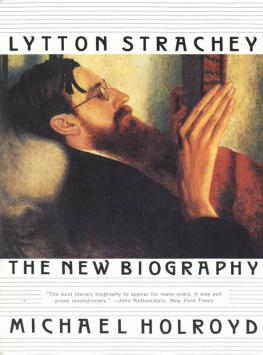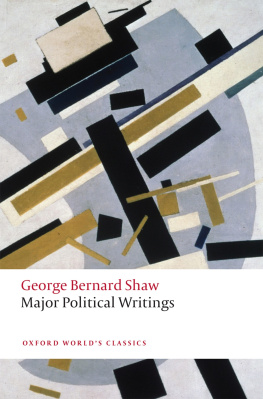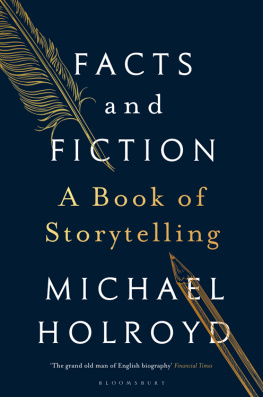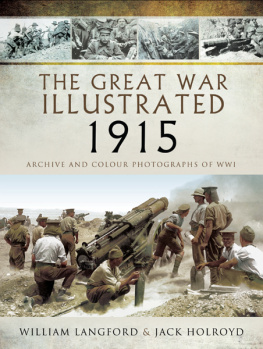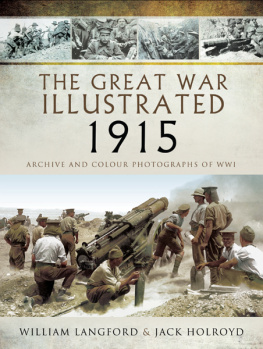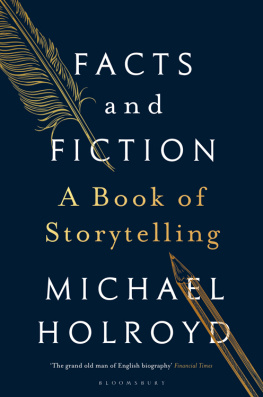
Praise for Bernard Shaw
We regard Mr. Holroyd with awe, as a prodigy among biographers. He has done his work calmly, in an admirably clear and concise style that is all his own.
Robertson Davies, New York Times Book Review
The definitive biography of Bernard Shaw worthy of its subject. The abundance of pungent quotation from Shaw himself is particularly to be commended.
Conor Cruise OBrien
A masterly biography.Leon Edel
By the end of this fascinating volume, Holroyd provides not only a sense of what it must have been like to know Shaw but also, far more enriching, a sense of what it must have been like to be Shaw.
Time
Holroyd shows himself more than equal to his task. He has a lively style, humor, a feeling for the finer shades of character, a keen sense of social atmosphere. His judgments are flexible and independent. Above all, he writes like a writer.
John Gross, New York Review of Books
Scintillating and suspenseful warrants awed gratitude.
John Updike, The New Yorker
By the same author
Non-fiction
HUGH KINGSMILL
UNRECEIVED OPINIONS
LYTTON STRACHEY
AUGUSTUS JOHN
BASIL STREET BLUES
WORKS ON PAPER
MOSAIC
Fiction
A DOGS LIFE
Editor
THE BEST OF HUGH KINGSMILL
LYTTON STRACHEY BY HIMSELF
THE ART OF AUGUSTUS JOHN
WITH MALCOLM EASTON
THE GENIUS OF SHAW
THE SHORTER STRACHEY
WITH PAUL LEVY
WILLIAM GERHARDIES GODS FIFTH COLUMN
WITH ROBERT SKIDELSKY
ESSAYS BY DIVERS HANDS
NEW SERIES: VOLUME XLII
LIST OF ILLUSTRATIONS
Between pages 242 and 243
1 Vandeleur Lee, with Shaws mother and father.
2 Lucinda Elizabeth Shaw.
3 George Carr Shaw.
4 Bernard Shaw, aged about 19.
5 Jenny Patterson.
6 Alice Lockett.
7 Shaw, 1891.
8 Charlotte Payne-Townsend, 1898.
9 Elizabeth Robins, 1891.
10 William Archer, c. 1900.
11 W. B. Yeats, 1890s.
12 Florence Farr.
Between pages 530 and 531
13 Sir Henry Irving.
14 Lillah McCarthy.
15 Shaw and Harley Granville Barker, 1901.
16 Shaw and Charlotte, c. 1905.
17 Ellen Terry.
18 Mrs Patrick Campbell.
19 Sidney and Beatrice Webb.
20 Shaw and Elgar, 1929.
21 A Fabian Society Summer School, 1922.
22 Shaw in Hollywood.
23 Erica Cotterill.
24 Molly Tompkins.
25 G.B.S. with Blanche Patch.
26 Charlotte Shaw.
27 Shaw in 1946.
ACKNOWLEDGEMENTS
The many people and institutions that helped me to prepare the original four volumes of my Shaw biography are comprehensively listed in those volumes, and I take this opportunity to renew my thanks to them all. I have continued reading The Annual of Bernard Shaw Studies in the United States and The Shavian in Britain, as well as new publications about G.B.S. and his contemporaries, and to keep an eye out for Shaw manuscript material coming up at auction, so as to make necessary adjustments to my text in this abridgement. I owe special thanks to Sarah Johnson who transcribed my increasingly illegible marginalia on to immaculate discs; to my editor Alison Samuel who has continued walking in my steps and issuing corrections when I put a foot wrong; and to Howard Davies who queried anything queryable in this revised narrative.
MICHAEL HOLROYD
Porlock Weir, December 1996
ILLUSTRATIONS
1, 3 Courtesy of the British Library, London. 2 Courtesy of Archibald Henderson, Man of the Century, Appleton, Century, Crofts, New York, 1956. 5, 24 Courtesy of the Dan H. Laurence Collection, University of Guelph Library, Guelph, Ontario. 6, 12 Courtesy of Dan H. Laurence, Bernard Shaw: Collected Letters, Vol. 1, Max Reinhardt Ltd, London, 1965. 7, 10, 13 Courtesy of the National Portrait Gallery, London. 8 Courtesy of the National Trust, 9 Courtesy of the Fales Library, New York University Library, New York. 11 Courtesy of John Kelly (ed.), Yeats Letters, Vol. 1, Oxford University Press, 1986. 14 Courtesy of the Burgunder Collection, Cornell University Library, New York. 15, 18, 26 Hulton Getty (Picture Library), London. 16 Courtesy of Mary Shenfield, Bernard Shaw: A Pictorial Biography, Thames & Hudson, London, 1962. 17 Courtesy of the Trustees of the Victoria & Albert Museum, London. 19 Courtesy of the Sir Barry Jackson Trust, Birmingham. 20 Courtesy of Allan Chappelow, Shaw the Villager and Human Being, Charles Skilton, London, 1961. 21 Pictorial Parade Inc. 22 Courtesy of Allan Chappelow, Shaw The Chucker-Out, George Allen & Unwin, London, 1969. 23 Courtesy of Smithsonian Magazine, Washington DC. 25 Courtesy of London of School of Economics and Political Science, British Library of Political and Economic Science, and the Society of Authors, London. Front endpaper Courtesy of Mander & Mitchenson Theatre Collection, Beckenham. Back endpaper Photo by Vandamm.
PREFACE
In the late 1960s the Shaw Estate decided to commission a new biography of G.B.S. Previous biographies had been partial, usually written by friends of Shaw, and the time had come for an assessment of the man in his period. Shaws executor, the Public Trustee, had recently relinquished his control of the publication and production arrangements for Shaws works and set up an independent Committee of Management composed of nominees from the Estates three residuary legatees (the British Museum and Royal Academy of Dramatic Art in London, and the National Gallery of Ireland in Dublin). Its first chairman, Sir John Wolfenden, director and principal librarian of the British Museum, took advice as to who should write Shaws life from an eminent biographer and incunabulist at the museum, and my name came up. So the Society of Authors (which acted as agent for the Shaw Estate) was asked to sound me out.
I was then thirty-four, had published a biography of Lytton Strachey the previous year and already agreed to write a biography of Augustus John. But this invitation surprised me. I was more accustomed to appeals from people wanting me not to write about their friends and members of their family. Perhaps, it occurred to me, I was becoming respectable. The feeling was not altogether comfortable. In fact, I was terrified. To my eyes G.B.S. appeared as a gigantic phenomenon with whom I felt little intimacy. At the same time he presented a challenge I really ought to accept. Nevertheless I hesitated. I had heard that Shaw used to write ten letters every day of his adult life and that correspondents kept his letters. I knew he had composed over fifty plays, that his collected works extended over almost forty volumes (and were well exceeded by his uncollected writings), and that there were libraries of books about his work and huge deposits of unpublished papers around the world. I suspected that with his shorthand and his secretaries G.B.S. could actually write in a day more words than I could read in a day. Since he lived into his mid-nineties, writing vigorously almost to the end, this was an alarming speculation. I therefore prevaricated, replying that while I would in principle be delighted to write Shaws Life, I could not in practice begin until I had finished Augustus John.
To my surprise the Society of Authors was undeterred by this delay. I did not begin my research until early in 1975 when I went to Dublin. I lived in Rathmines, strategically placed between a convent and a barracks, and a mile or so from Shaws birthplace in Synge Street. Intermittently I worked at the National Library of Ireland (to which Shaw had donated the manuscripts of his novels) and I visited Dalkey where he had passed his happiest hours while growing up. I also met a number of writers - John ODonovan, Monk Gibbon, Vivian Mercier, Arland Ussher, Terence de Vere White who encouraged me. Yet, however hard I try, I cannot account for my time in Ireland very coherently. The atmosphere was thick with goodwill. There was almost no one who, even when they had no information at all, would not be prepared to volunteer something over a jar or two. People I had never heard of came to advise me that they knew nothing, and then stayed on awhile. Many wrote letters to the same effect: some hopefully in verse; others more prosaically enclosing business cards. And everyone pressed in on me so warmly that I was moved to reply with such politeness that my replies elicited answers to which I felt bound to respond. One lady (whom I had never met) eventually enquired whether we had ever had an affair, the crucial part of which had escaped her. I was swimming in the wake of the great Shaw legend, swimming and almost drowning.


